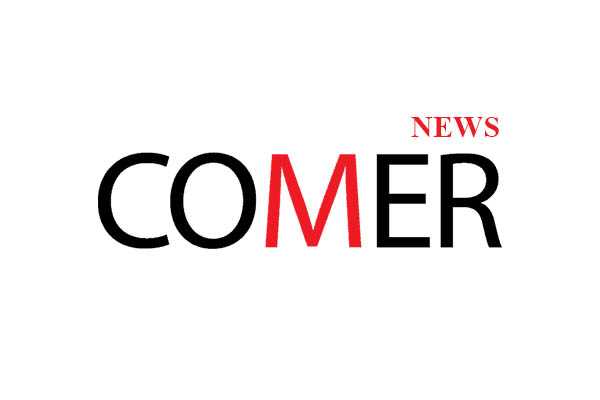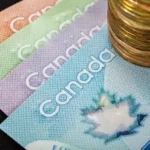By Murray Dobbin, Today, TheTyee.ca
That’s what corporations hoard while Tories refuse to stimulate jobs.
Imagine for a moment two societies living side by side. One has discovered the wheel and uses it. The wheel makes life easier for workers and boosts the economy for everyone. Prosperity reigns. The society next door is well aware of the wheel and watches as its neighbours move inexorably ahead, becoming wealthier, more efficient and healthier while creating more leisure time for cultural activities.
But the ones who reject the wheel aren’t those who do the work in this society. Those who refuse it are the governing elite, the priests, the official advisors and scribes who have incorporated a moral objection to the wheel into the state religion.
Use of the wheel is thus proscribed by faith, not reason. All practical arguments in its favour are rendered useless.
While Canada is not exactly a next door neighbour to Norway and other Scandinavian countries, there is no excuse for not knowing and emulating the proven success of those nations. What’s their open secret? Replace the wheel in this story with robust government engagement in the economy and you have pretty much all you need to understand about why Norway, Sweden and Denmark are doing so well economically and socially. And why Canada is destined for inexorable decline.
Indeed, Canada’s government is so dedicated to the religion of austerity that it could easily appear to some future anthropologist that our civilization declined in relentless pursuit of downsizing itself. Unlike the Maya, who apparently outgrew their social and economic structures, we seem determined to deliberately dismantle ours.
Cure for “Chronic Demand Deficiency Syndrome”
Canada and Eurozone countries are suffering from what Martin Wolfe, writing in the Financial Times, calls ”chronic demand deficiency syndrome.” It is not that governments are unaware of the problem of deficient demand. John Plender, another Financial Times economist, focuses on the Eurozone, which, he writes ”is being driven towards deflation by a moralistic drive for austerity which does nothing to arrest rising debt as a percentage of gross domestic product….” He could just as easily be talking about Canada where collapsed oil prices are poised to accelerate a deflationary situation already threatening because of weak demand.
A recent study on Norway, Sweden and Denmark, titled How Can Scandinavians Tax So Much?,” demonstrates how national governments can actually address underlying structural demand weaknesses – or rather, in their cases, how to prevent such weaknesses from developing in the first place. The key is not just high government spending but a dedication to revenue collection that comes as close as possible to eliminating leakage in the tax system.
The top marginal income tax rate in the three countries is between 60 percent and 70 percent compared to 43 percent in the US and about 50 percent in Canada. Add in other taxes like consumption and payroll levies and the average Scandinavian worker gets to keep just 20 percent of her paycheck. In the US that same employee keeps 63 percent.
How can such high tax rates (which would be denounced as “punitive” here) result in some of the best economic outcomes on the planet?
How can the Scandinavian countries studied produce such high standards of living, high labour participation rates, highly profitable corporations and high placements (all higher than Canada) in the world competitiveness sweepstakes?
Here is how. Unlike in Canada, where Prime Minister Harper openly demonizes taxes (“I don’t believe any taxes are good taxes”), Scandinavian governments have totally committed themselves to collecting all the revenue due to them.
According to the study’s author Henrik Jacobsen Kleven: “First, the Scandinavian tax systems have very wide coverage of third-party information reporting and more generally, well-developed information trails that ensure a low level of tax evasion. Second, broad tax bases in these countries further encourages low levels of tax avoidance…. Third, the subsidization or public provision of goods that are complementary to working – including child care, elderly care, transportation and education – encourages a high level of labour supply.”
With the governments pumping billions of dollars into the Scandinavian economies there is no “chronic demand deficiency syndrome.” They do not rely on debt-financed consumer demand and the reduction of private consumer spending makes for more rational economic decision-making overall.
The US has accomplished what appears to be a stable recovery by also rejecting the austerity obsession and engaging in repeated rounds of quantitative easing – artificially pumping money out into the economy though bond purchases. Canada meanwhile is actually sucking billions out of the economy through tax cuts to sectors (corporations and the One Percent) who aren’t spending it.
The Power of Government Stimulus
The dominant view of taxing and spending in this country has been carefully constructed over a period of 30 years. It is that taxes take money out of the economy and undermine investment. This claim is now revealed as nothing less than an outright lie.
But it should surprise no one. A 1985 book, Government Limited by John Calvert, revealed just how much government spending stimulates the economy and bolsters the private sector. Calvert pointed out that most government spending ends up in the coffers of private businesses: police departments buying cars, hospitals buying pharmaceuticals, governments buying paper, building ships, constructing highways, bridges and ports. Fully 12 percent of private sector employment in 1984 was directly attributable to government spending on goods and services.
But that doesn’t even count the direct spending of government employees whose salaries represented 22 percent of non-investment income. That translated into 12 percent of total spending on private goods and services. Transfer payments – welfare, family allowance and pensions – accounted for 13 percent of spending on goods and services. The tax revenue for these expenditures came largely from individuals rather than corporations so that rather than a drain on corporate investment, government spending is in fact a subsidy to business. Withdraw it and thousands of businesses would simply go bankrupt.
Corporations Bit on $626 Billion
Of course we have withdrawn billions since 1985 – over $60 billion a year in abandoned revenue at the federal level if you go back and count Paul Martin’s huge tax cuts in 2000-2005. If we had that money back to spend, the vast majority of it would ultimately end up being spent in the private sector. And that might actually convince Canadian corporations to invest some of the $626 billion in idle cash it is now sitting on. (An IMF report recently chastised Canadians corporations for accumulating idle capital at a faster rate than any other country in the G7.)
Around the world the religious orthodoxy of unfettered capitalism is being questioned on many fronts. But not in Canada. The 2008 financial crisis had the effect of throwing into question the neoliberal orthodoxy of the gradual disappearance of the nation-state as a key player. Conflicts between states now abound and citizens in EU countries are demanding actions that conflict fundamentally with the EU collective wisdom. As the Financial Time’s mark Mazower states, “…by discrediting the more mythical idealisations of the market, [the crisis] has encouraged the restoration of state power as a goal in itself.”
It is a trend vigorously resisted by the Harper government at every turn.
Use the Wheel, Canada
Some in the financial world have even begun talking about taking an old tool out of the state tool box that would allow deficit spending without going into hock to the banks and international lenders. That tool is monetizing government debt. In other words, ending the absurd “independence” of central banks and using them to create the money supply, allowing governments to borrow effectively from themselves at near zero interest rates (as they once did). This would have the added benefit in Canada of ending the irresponsible practices of the Canadian private banks and their reckless creation of a housing bubble.
But that’s a radical solution that is beyond the pale in Harper’s world.
Another global trend that Harper has been trying to avoid is the ending of tax evasion by corporations and wealthy individuals through the global harmonization of corporate taxes. This objective, being pursued most seriously by EU nations, also has its roots in the revival of nation-state power: countries are desperate for revenue to fund national democratic governance.
None of these trends is universal but the spectre of another crisis, much worse than the last, is challenging free market orthodoxy everywhere. Those countries that take up the challenge first and most effectively are the ones that will survive the next disaster.
In other words, the “wheel” is now a known to be powerful invention and the only question remaining is who will embrace its use first or last.
So far, Canadians must continue to watch their Scandinavian neighbours use the wheel and prosper while we remain captives of the free market priesthood.
Norway’s Lessons
Norway is the logical choice of neighbour to compare ourselves to, if you can stomach it.
In Canada we have virtually given away our energy heritage through criminally low royalty rates over a period of some 70 years. Norway bargained hard with oil companies to develop its relatively new-found resource – and kept ownership of it. The result, as reported in The Tyee, is a heritage fund of (as of a year ago) CAD$909.36 billion. That puts tiny Norway $1.5 trillion ahead of us and while each Canadian has a $17,000 share of our $600 billion debt national debt, each Norwegian has a $178,000 stake in their surplus. Norway puts aside a billion dollars a week from its oil resource.
But all that oil money aside (literally), Norway actually funds its government services through taxes which its citizens gladly pay. And why not? As The Tyee’s Mitch Andersen reported: “Norwegians enjoy universal day care, free university tuition, per capita spending on health care 30 percent higher than Canada and 25 days of paid vacation every year.”
We on the other hand live in a country where a third of citizens believe in Harper’s fiscal self-flagellation, in an extremist religion that calls upon us all to deliberately impoverish ourselves. Hallelujah.
Murray Dobbin, now living in Powell River, BC has been a journalist, broadcaster, author and social activist for over forty years. He now writes a bi-weekly column for the on-line journals the Tyee and rabble.ca. He can be reached at murraydobbin@shaw.ca.
Our Comment
When household debt is 165% greater than household income, good jobs are hard to come by, and both fiscal and monetary policies are such as to beggar both citizens and government alike, one can hardly marvel at a chronic demand deficiency! What is fantastic is the notion – given these circumstances – that austerity can revive a failing economy! Never mind the historical evidence that, indeed, austerity leads, inevitably, to recession or depression.
The lie that taxes impede investment and tax cuts promote it, is especially false today, given the emphasis on using money (preferably other people’s money), to make more money – draining money from the real economy and, instead, hoarding it, speculating, or gambling with it.
Just as the EU countries are coming to appreciate the true cost of trading their national sovereignty for “mythical idealizations of the market,” and recognizing the need to take back state power, we Canadians – long tolerant of the suspension of Canada’s sovereign right to fund its needs with government-created money at near-zero interest – risk losing that right altogether, under trade deals like the Comprehensive Economic and Trade Agreement and the Trans Pacific Partnership, being negotiated behind our backs.
How can using our public central bank to restore state power, and to serve the common good – as it did from 1938 until 1974 – be a radical solution?
What does strike me as being radical is the silent transfer of the power to create money from a bank of our own, to private Banks. Who authorized that shift? Article 14(2) of the Bank of Canada Act (1934) makes it clear that monetary policy is the government’s responsibility:
If… there should emerge a difference of opinion between the minister and the Bank, concerning monetary policy to be followed, the minister may…give the governor a written directive…and the Bank shall comply with that directive.
Fiscal policy that reflects society’s values and principles is a great tool but, as economist Joseph Stiglitz points out in, The Price of Inequality, monetary policy is a central determinant of an economy’s performance. And these two tools must work together – like a hammer and a nail.
Paul Martin’s contribution merits a closer look. Interestingly, this is the same Paul Martin who, at a seminar during the infamous Toronto G-20 summit, proclaimed that, “No nation state today can manage its own economy,” that, “We must have global economic governance.” What better way to undermine a nation’s sovereignty than to “abandon revenue at the federal level”?!
Murray Dobbin’s, Paul Martin: CEO for Canada?, is an excellent account of Paul Martin’s slash–dash–debilitate budgets.
In The Rise of Canada’s Richest 1%, Armine Yalnizian, economist with the Canadian Centre for Policy Alternatives, points out that “after 1980, despite a decade of unbroken economic growth… a clear and consistent trend towards greater equality took… the great u-turn of our time.”
In his book, Murray Dobbin traces the policies that propelled the liberal party through that u-turn from its socially progressive “Red-Book” campaign to its 1993 post-election austerity budgets, through which Paul Martin charted a course that “changed the whole purpose…the very DNA of government,” exploiting the public’s willingness to “sacrifice for the good of the country, to tighten their belts, and to do the right thing in the face of a crisis” (the deficit). “In doing so, however, they signed a contract whose fine print they did not read.”
From his “1995 watershed budget for the continued corporatization of Canada,” to his “record-breaking, tax-cut program in 2000,” Martin engineered “the most radical restructuring of the Canadian Nation-State in its history – a reversal of 40 years of nation building.”
Paul Martin’s “redefinition of government” totally ignored the social consequences of such policies.
To so emasculate a nation’s government and to so mislead its citizenry may well render a nation incapable of managing its own economy. What better way to promote a “New World Order”?
Murray Dobbin’s account of how it was managed in Canada is wonderfully enlightening and informative and a practical arsenal of facts to take into the next federal election.
Now is the time to take back the power that is ours. The debt-money system whose evils include unsustainability, growing inequality, an increasingly undemocratic political economy, and debt, must go. As economist Michael Hudson has argued, we have gone about as far as we can go, fuelling our economy through debt, and are headed, unless we change course, for a depression far worse than the crash of ’29.
Norwegians have put their wheel into the hands of politicians committed to a political economy designed to serve the common good of Norwegians.
Canadians will soon have an opportunity to decide what sort of politicians will take the wheel in Canada.
Élan





